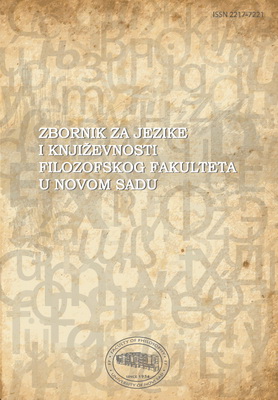ZNAČAJ VIZUELNOG ELEMENTA PRI INTERPRETACIJI REKLAMA NA SRPSKOM JEZIKU (PRIKAZ IZ UGLA TEORIJE POJMOVNE INTEGRACIJE)
THE VISUAL ELEMENT AS A FACTOR IN IN TERPRETING ADVERTIS EMENTS
Author(s): Sonja Filipović KovačevićSubject(s): Language and Literature Studies
Published by: Филозофски факултет, Универзитет у Новом Саду
Keywords: advertisement; picture; language; implicature; conceptual blending;
Summary/Abstract: This paper examines the significance of the visual element when interpreting intended messages in advertisements from the cognitive-linguistitic perspective, whereby an applied, experimental element is involved. The object of analysis are modern advertisements in which messages are conveyed implicitly, and thus represent a type of soft-selling advertising strategy, which means indirect, subtle representation of the advertised product`s positive sides. More precisely, the studied advertisements contain linguistic and visual elements, which are often logically incogruous, and in which information is “packed” in such a way that it is not immediately clear what the message is. The aim of this paper is to indicate the significance of the visual element in advertisements, as well as its dominance over the linguistic element in the process of reconstructing implied, intended meaning. For that purpose, a pilot experiment was conducted. Examinees were asked to analyse two advertisements containing interesting pictures, whereby interesting means that pictures represent something unrelated to the advertised product, or something logically incogruous. Examinees were to answer the following questions: “What is the message of the advertisement?” and “How did you arrive at that message, i.e. meaning?” On the basis of their answers strong and weak implicatures were derived. It was determined that the visual element is crucial in the interpretation process, since most examinnes relied only on the visual or the combination of the visual and the linguistic elements. Also, the very interpretation process was represented taking the model of conceptual blending. Finally, it can be concluded that message recipients first respond to pictures, since they are visually dominant and prominent, and thus serve as a kind of bait for attention and consideration. Only after this first impression do message recipents focus on language, and correct their previous inferences, i.e. strong implicatures, or get new nuances of meaning, i.e. create weak implicatures.
Journal: Zbornik za jezike i književnosti Filozofskog fakulteta u Novom Sadu
- Issue Year: 2/2012
- Issue No: 2
- Page Range: 157-175
- Page Count: 18
- Language: Serbian

